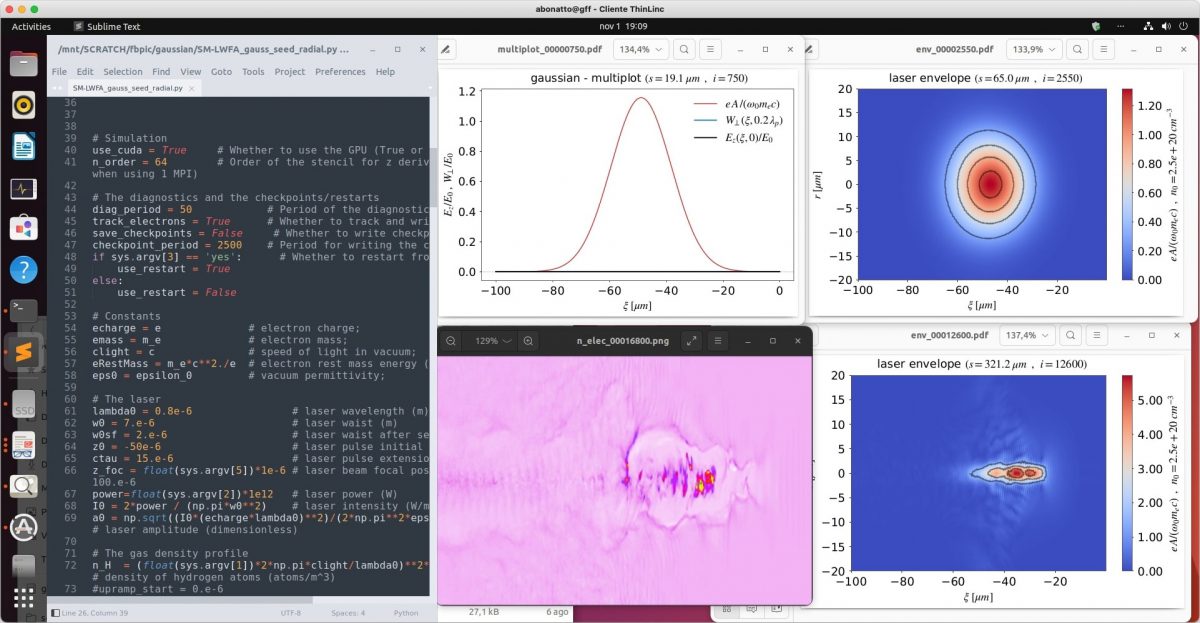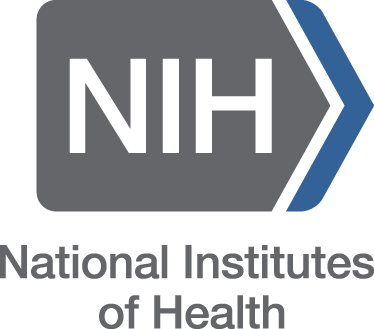
Motivation
High-Performance Computing (HPC) plays a pivotal role in numerous scientific and engineering domains. From analyzing vast datasets to executing intricate simulations and visualizing complex models, HPC clusters are essential. Traditionally, HPC resources are accessed by connecting to a login node using SSH and then using a job scheduler such as Slurm to schedule a job on the compute cluster. For someone with extensive Linux knowledge, this way of working is relatively straightforward. However – a large proportion of those who can benefit from HPC do not have the necessary Linux fundamentals in place. This means that HPC becomes more approachable and usable in more science disciplines, resulting in a wider range of datasets and even more brilliant minds making use of them.

The ability to run responsive graphical workloads on your HPC cluster empowers both novice and seasoned users.
Complementing SSH with ThinLinc on the login nodes solves many of the accessibility issues associated with HPC. By giving the users a remote desktop environment instead of a bash shell, users can interact with the HPC system without command line experience and run compute-heavy visual tools with high graphical fidelity and performance. Besides making life easier for inexperienced Linux users, ThinLinc in HPC also opens up for an entirely new paradigm of working with scientific computations. With ThinLinc, login nodes can not only serve as the entry point for scheduling jobs, but also as a workspace for scientific computing containing all necessary programs and tooling for both developing and scheduling scientific workloads interactively. This eliminates both the need to transfer data back and forth between your workstation and the HPC cluster and the need to configure an HPC-like runtime environment on your workstation.
Regardless if you choose to use ThinLinc as a workspace for everything scientific or just as a graphical and more user-friendly alternative to SSH on the login nodes, ThinLinc will drastically improve the usability and accessibility of your HPC resources.
End-user benefits
ThinLinc powered remote desktop login nodes alongside your SSH login nodes will drastically improve the user experience for a large portion of the people using your HPC cluster.
-
Visualize large datasets without time-consuming downloads or the subpar performance of X11 forwarding.
This makes it simple to use applications such as ParaView and VisIt for engineering and scientific visualizations; Chimera, PyMOL, GROMACS, Visual Molecular Dynamics (VMD) and Amsterdam Modeling Suite (AMS) for computational chemistry and biology; and MATLAB and GNU Octave for mathematical and technological computations.
- Easily handle jobs running for days or even weeks without the learning curve of tools like screen or tmux.
- Supports in-session accelerated graphics for demanding 3D workloads.
Sysadmin benefits
ThinLinc also brings several benefits to the heroes keeping the world’s HPC clusters operational day in and day out.
- Less time spent on support tickets and onboarding new users.
- ThinLinc uses SSH as its secure transport protocol, meaning it will fit right in next to your current login nodes without additional security considerations.
- Cendio is a Linux-focused company by heart and puts great effort into providing software that strongly adheres to the design language of the rest of your Linux system. We strongly believe in the principle of least surprise. In short, getting ThinLinc into production will be a breeze.
- World-class onboarding and support with specialists in the HPC domain – we will make sure you succeed!
Organizational benefits
There are also many benefits to running ThinLinc on your HPC cluster for the organization hosting the HPC cluster.
- ThinLinc makes HPC clusters accessible to a wider audience, simplifying securing of funding.
- As more science disciplines get access to HPC resources, even more datasets are created, strengthening both new and existing HPC projects.
Do you believe ThinLinc has a place in your organization? Do not hesitate to get in touch. We are always happy to give advice and answer any questions you may have:
- Email: demosupport@cendio.com
- Community forum: https://community.thinlinc.com/
Experience the power of ThinLinc in HPC
Curious about how ThinLinc performs in an HPC environment? We offer personalized demo environments tailored for the HPC sector. Whether you would like a firsthand experience on our cluster located in Sweden or prefer an external cloud provider setup, we have you covered. It’s not just about watching; it’s about experiencing the capabilities of ThinLinc in a high-performance computing setting.
Partnerships
ThinLinc has partnered with the authors of Amsterdam Modeling Suite (AMS), SCM. This gives them the means to provide a cloud-based demonstration environment for AMS for prospective customers.
If you’re a Linux application provider looking to elevate the remote graphical access experience for your users, let’s join forces.
Resources
- Discuss: HPC on the ThinLinc Community — Join in on the HPC discussions on our community forum.
- Learn more: HPC blog posts — Read our series of blog posts covering the immense benefits of not limiting HPC use to the terminal.
- Get inspired: HPC webinar series — Watch our webinar series featuring several high-profile institutions in the world of HPC covering how ThinLinc brought them to success.
- Explore: HPC customer videos — Experience graphical HPC in action and how it is used in the wild.
Who uses ThinLinc in this context?
 Leidos
Leidos

Leidos
Leidos, a leader in sectors including Health & Civil, Commercial & International, and Digital Modernization, has adopted ThinLinc to enhance remote Linux access for their engineering teams. In their mission to develop advanced simulation software, Leidos faced the need to transition from individual Linux workstations to a centralized, secure solution during increased remote work. ThinLinc proved to be the perfect fit, replacing X2Go and seamlessly integrating with their existing security infrastructure. This transition has ensured that Leidos can continue delivering high-performance computing (HPC) solutions with the robust security and efficiency required for their critical projects.
 Secure Interactive Environments for SensiTive data Analytics
Secure Interactive Environments for SensiTive data Analytics

Secure Interactive Environments for SensiTive data Analytics
The SIESTA project, funded by the EU's Horizon Europe program, aims to build a secure, open platform for researchers to analyze sensitive data while upholding privacy. Led by the Institute of Physics of Cantabria, 17 institutions collaborate to develop tools for finding, analyzing, and sharing sensitive data responsibly. Cendio ThinLinc's secure remote access technology is key to building the secure environment where researchers can analyze this data. This project, running from 2023 to 2026 with a €5 million budget, promises to revolutionize how researchers access and utilize sensitive data across various fields. Learn more about SIESTA at https://cordis.europa.eu/project/id/101131957, and how ThinLinc empowers secure access.
 Linköping University
Linköping University

Linköping University
 Indiana University
Indiana University

Indiana University
ThinLinc is used to give hundreds of people graphical access to the university's supercomputer without any noticeable latency. ThinLinc's local drive functionality is very popular at Indiana University.
 UFCSPA – Universidade Federal de Ciências da Saúde de Porto Alegre
UFCSPA – Universidade Federal de Ciências da Saúde de Porto Alegre

UFCSPA – Universidade Federal de Ciências da Saúde de Porto Alegre
ThinLinc has been used by scientists at the Beam Physics Group (GFF) at the Federal University of Health Sciences of Porto Alegre (UFCSPA), Brazil, to accelerate and optimize this crucial work in developing treatments for tumors.
 National Institutes of Health
National Institutes of Health

National Institutes of Health
 Lund University
Lund University

Lund University
ThinLinc is part of a system that provides a user-friendly and scalable desktop environment for HPC and visualization at Lund University.
 National Laboratory for High Performance Computing – Chile
National Laboratory for High Performance Computing – Chile

National Laboratory for High Performance Computing – Chile
The National Laboratory for High Performance Computing (NLHPC) in Chile leverages ThinLinc technology to offer users a graphical interface for accessing their HPC cluster. This eliminates the need for traditional command-line job submissions, instead providing interactive remote desktop sessions for popular applications like Matlab, Rstudio, and VMD. This intuitive approach opens up the cluster's potential to a wider user base, simplifying access and enhancing the overall user experience.
 Uppsala University
Uppsala University

Uppsala University
 University of Strathclyde
University of Strathclyde

University of Strathclyde
The HPC systems at the University of Strathclyde are accessed through ThinLinc.
 Technical University of Denmark
Technical University of Denmark

Technical University of Denmark
ThinLinc gives thousands of students, researchers and faculty reliable and secure remote access to the University's cluster.
 Purdue University
Purdue University

ThinLinc HPC Webinar Series
Dive deep into the world of High-Performance Computing with our exclusive webinar series on ThinLinc and HPC. Uncover cutting-edge insights, best practices, and groundbreaking developments that are shaping the future of remote graphical access. Don’t miss out – click now to join the conversation!
